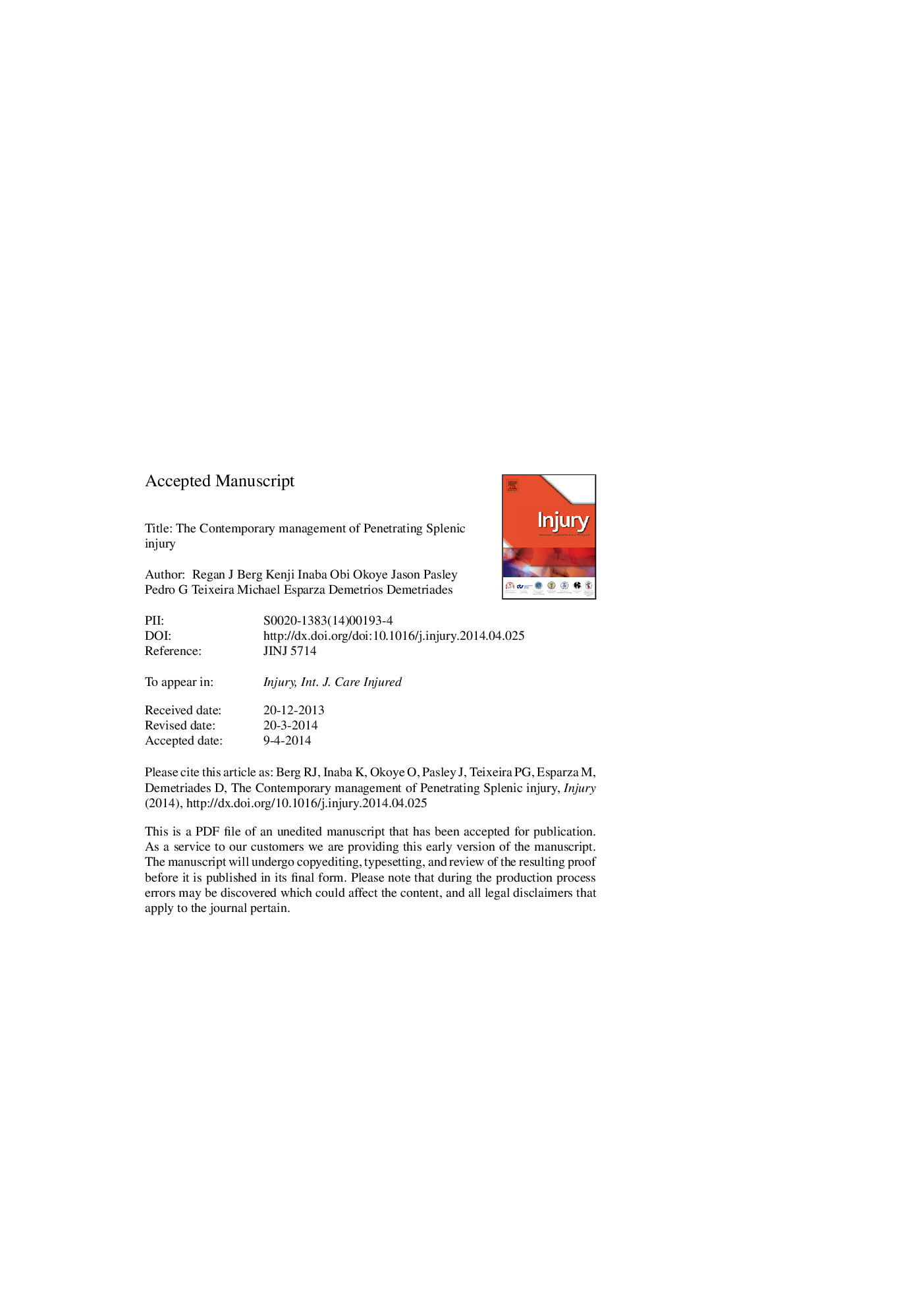| Article ID | Journal | Published Year | Pages | File Type |
|---|---|---|---|---|
| 6083581 | Injury | 2014 | 27 Pages |
Abstract
Although the vast majority of penetrating splenic trauma requires urgent operative management, a group of patients does present without haemodynamic instability, peritonitis or radiologic evidence of hollow viscus injury. Management of these patients is complicated as over half may remain clinically stable and can avoid laparotomy, making them potential candidates for a trial of NOM. HVI is responsible for NOM failure in up to a fifth of these cases and typically presents within 24Â h of injury. Delayed laparotomy, within this limited time period, did not appear to increase mortality nor preclude successful splenic salvage. In clinically stable patients, diagnostic laparoscopy remains essential to evaluate and repair occult DI. As NOM for penetrating abdominal trauma becomes more common, multi-centre data is needed to more accurately define the principles of patient selection and the limitations and consequences of this approach in the setting of splenic injury.
Related Topics
Health Sciences
Medicine and Dentistry
Emergency Medicine
Authors
Regan J. Berg, Kenji Inaba, Obi Okoye, Jason Pasley, Pedro G. Teixeira, Michael Esparza, Demetrios Demetriades,
